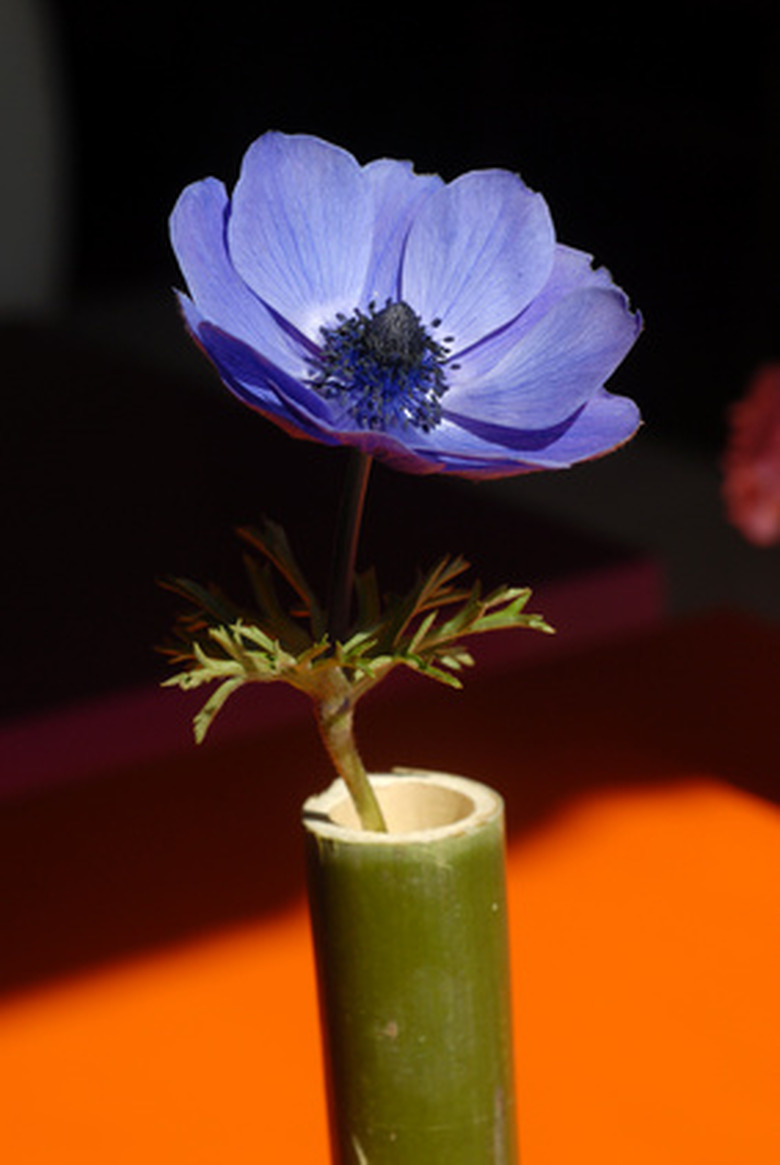How To Plant Windflower Bulbs
Things Needed
- Windflower (Anemone blanda) tubers
- Garden fork, spade or rototiller
- Soil amendment
- Bone meal
- Fertilizer
- Metal rake
- Trowel
Windflowers, perennials of the Anemone genus, are usually grown from tubers or rhizomes, but they are generally grouped with flowering bulbs. A common species is Anemone blanda, known as Grecian windflower. Originally from southeastern Europe, Grecian windflowers are petite plants, only only reaching 3 to 6 inches in height. Their perky, daisy-like flowers are 1 1/2 to 2 inches wide and come in blue, pink, white and red. They bloom in spring, as do most windflowers. The Japanese windflower (Anemone hupehensi var. japonica), on the other hand, blooms in mid-summer to early fall and reaches a height of 24 to 36 inches. Plant windflowers in the fall, from late October through November.
- Windflowers, perennials of the Anemone genus, are usually grown from tubers or rhizomes, but they are generally grouped with flowering bulbs.
Step 1
Decide where you want to plant your windflowers. The ideal site should provide partial shade and offer protection from the wind, as suggested by the University of Illinois Extension.
Step 2
Work the soil in the planting area using a spade, a garden fork or a rototiller to a depth of between 16 and 18 inches. Sift through the soil using a metal rake to pick out any sticks, roots or weeds.
Step 3
Amend the soil in the planting area according to soil texture. Lay out an even layer of between 3 and 4 inches of compost or coarse sand over soil that feels sticky or clay-like. If the soil is sandy or light, lay out a 2- to 3-inch layer of aged manure or peat moss. Work the amendment into the soil to a depth of approximately 16 inches .
- Decide where you want to plant your windflowers.
- Work the soil in the planting area using a spade, a garden fork or a rototiller to a depth of between 16 and 18 inches.
Step 4
Mix together, in a bucket or bowl, 5 tbsp. of 4-10-6, 5-10-20 or equivalent bulb-type fertilizer with 2 cups of bone-meal for every 10 square feet of planting area. Set the mixture out over the soil in an even layer and work it in thoroughly.
Step 5
Dig planting holes for the windflower tubers between 1 and 2 inches deep, spacing the holes 8 to 12 inches apart.
Step 6
Plant 1 windflower tuber per planting hole. Plant with the scarred, or depressed, area facing upwards. Cover up each tuber with between 1 and 2 inches of soil.
- Mix together, in a bucket or bowl, 5 tbsp.
- of 4-10-6, 5-10-20 or equivalent bulb-type fertilizer with 2 cups of bone-meal for every 10 square feet of planting area.
Step 7
Water the windflowers thoroughly using a slow stream of water, since the water needs to sink into the soil to reach the tubers. Refrain from watering the windflowers again until the first buds appear in spring. Provide 1 inch of water every week thereafter if there is no supplemental rainfall.
Tip
For areas that experience winter temperatures of -10 degrees Fahrenheit, apply 4 to 5 inches of pine bark, straw, grass clippings or other like material for mulch over the entire planting area. Do this directly following the first hard frost. Once shoots emerge in the spring, fertilize the windflowers using the same bulb fertilizer you used in step 4 above. Spread the fertilizer out, keeping it approximately 2 inches from each of the windflowers.
Warning
Keep this plant away from animals and small children, since all parts of windflowers are considered poisonous.
